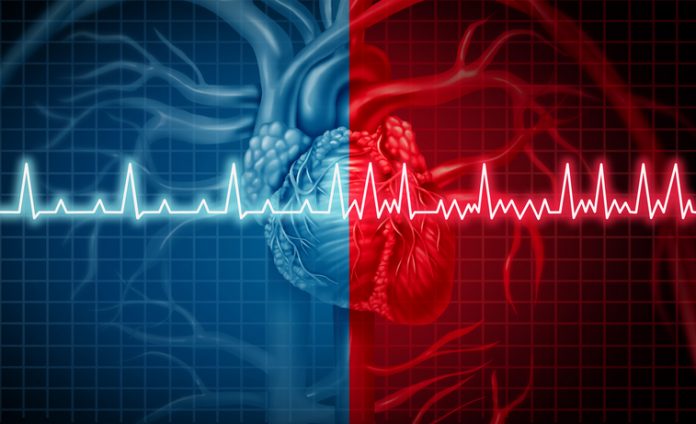
A wearable ultrasound patch, the size of a postage stamp, can take images of the heart and monitor its performance even during strenuous exercise.
The device, described in the journal Nature, offers a portable alternative to bulky imaging machines and allows continuous, real-time assessment of heart function.
Currently, cardiac function can only be assessed through either imaging or continuous measurement, not both together.
It has also previously been impossible for ultrasound to assess cardiac anatomy and function during exercise, even though this can provide valuable insights into heart abnormalities.
“Conventional ultrasound techniques have limitations in their ability to conduct imaging for [a] prolonged time, as they necessitate the patient to maintain stationary,” explained senior investigator Sheng Xu, who leads a research group at the University of California San Diego (UCSD) department of nanoengineering.
“This paper presents a method for the fabrication and utilization of a wearable ultrasound patch, enabling long-term imaging on patients in motion,” he told Inside Precision Medicine.
“Furthermore, a deep learning model has been developed to automatically process the acquired images and provide actionable information for healthcare practitioners.”
The patch has similar elasticity to skin, so it impacts minimally on daily life.
It is composed of two linear arrays of ultrasound transducers, which are arranged in a cross shape to allow imaging from two orthogonal views without the need for repositioning.
Dense elements in the ultrasound patch provide an imaging quality that is similar to that of a commercial imager.
Ultrasound waves are constantly sent and received to generate a constant stream of images. A neural network automatically processes these to independently extract key measures of cardiac performance including stroke volume, cardiac output and ejection fraction.
In a research briefing accompanying the findings, co-authors Hongjie Hu and Hao Huang, also at UCSD, note that current ultrasound techniques only obtain images before and after exercise and that a quick recovery could mask temporary pathologic responses during stress.
The endpoint for ending exercise using current techniques is also subjective, which could lead to suboptimal testing.
The two authors acknowledge that the current patch is “not perfect” and that it is currently tethered at the back end by flexible cables for data and power transmission.
Work is also needed on its spatial resolution and the generalizability of the algorithms used so they can be applied to wider populations.
Nonetheless, the two researchers suggest: “Wearable ultrasound technology opens up a new dimension for deep-tissue sensing.
“The technology could be extended to image various deep tissues and central organs, not just the heart.
“Continuous ultrasound images that capture the anatomy and dynamic functions of internal tissues and organs can provide an unprecedented amount of information about health status and fitness.”
In an expert opinion, David Ouyang from Cedars Sinai Medical Center in Los Angeles adds: “As a cardiologist, I think such a device would be clinically useful and even practice-changing.”













